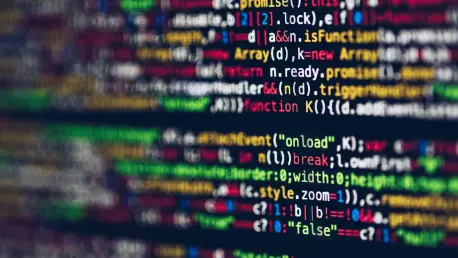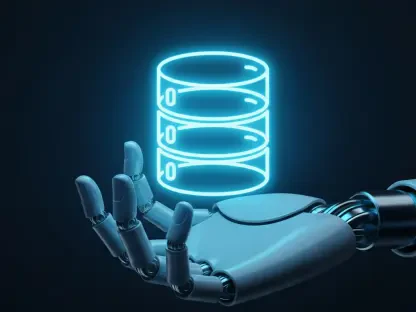Since the rise of generative AI, the future of software development has changed beyond imagination. Tools that can rapidly generate code, build websites, and automate software testing have become ubiquitous, meaning developers must think outside the box to stay ahead.
Blockchain, a technology that meets modern demands for transparency, security, and zero trust, offers the perfect foundation for truly future-proof software applications—if used in the right way.
In this article, you will explore the fundamental components of blockchain technology and how they tackle today’s most pressing challenges across the software lifecycle, enabling a promising future of secure, seamless, and trustworthy software development.
Current Problems in Software Development
Development teams are under immense pressure to master technology stacks while keeping pace with digital and technological advancements. As a developer, staying current requires completing your daily tasks with precision, bolstering your knowledge of programming languages, frameworks, and tools, and navigating software libraries.
Today’s ever-accelerating speed of innovation outpaces humans’ ability to learn new techniques while finishing day-to-day work with efficiency, as is the nature of technology. To stay ahead of the curve, successful developers embrace continuous learning and agile methodologies, but this may still not be enough.
This creates a dilemma for today’s software developers, in addition to time constraints, limited infrastructure, and software security threats. Fortunately, the benefits of blockchain promise to reverse these limitations and usher in a simplified, more transparent software development lifecycle.
What Is Blockchain?
Web3, blockchain, and decentralized apps are still nascent in terms of maturity. However, they will enable the secure, accessible future of modern software and digital experiences. Each technology represents unprecedented strides forward in terms of digital innovation. The question is, how will software developers leverage the promise and potential of blockchain technology to stay relevant in an age of AI-powered processes and low-code tools?
Blockchains facilitate secure data transactions through decentralized and distributed technologies that keep a historical, unmodifiable record of all exchanges that have taken place on the network. Increasingly the subject of government scrutiny and regulation, blockchain remains a solid way to circumvent cyberattacks with its linked network of computer nodes, which is free from regulatory interference and relies solely on user visibility to ward off malicious activity.
Blockchain has mainly been used in finance, where transparency is key. But as technology progresses and security threats increase, blockchain’s advantages become clearer for everything from financial transactions to legal documents and personal information protection. Deepening your knowledge of blockchain and its extensive applications will position you for continued innovation as today’s business landscape grows in complexity.
Blockchain technology, decentralization, and smart contracts fall under the umbrella of Web 3.0, which represents the next stage in the evolution of the Internet as we know it. Web 3.0 aims to empower users with full control and ownership of whatever they share on the network, improving trust between users, enhancing data privacy, and eliminating geographical and political forces of censorship.
How Decentralized Apps Transform Software
A decentralized web application, one of the four main principles of Web 3.0, also restores full ownership of digital spaces to people. Instead of handing over control of their data to infrastructure providers, users can choose where their data resides, who leverages it, and how it’s used. Naturally, this modular approach to what’s taking place on a connected network offers opportunities for software developers and engineers to operate with the ultimate efficiency, security, and collaboration.
Decentralized apps boast several features that complement the ins and outs of software development, and, more specifically, address the limitations that today’s developers face. These include a lack of security, control, and transparency. Given the growth of new user expectations and data privacy demands, traditional app models no longer cut it.
The decentralized application market is expected to reach nearly $140 billion by 2032, with a 22% annual growth rate. Additionally, unique active wallets (UAWs)—which are the number of distinct users interacting with decentralized apps on a daily basis—reached 24.6 million users daily in 2024, while AI-powered decentralized applications have also seen exponential growth in user engagement recently.
The capabilities of distributed blockchain systems, open source, smart contracts, tokenization, immutability, and auditability address those shortcomings directly. Let’s take a look at a few of these features in further detail:
Smart Contracts
Smart contracts allow for automated data exchanges powered by simple “if/when… then…” statements, which are coded onto the blockchain early in the development process. Once a certain condition is met, the blockchain is automatically updated without the need for a third party or intermediary, meaning that the transaction was successful. Smart contracts enable developers to create intent-driven applications that seamlessly execute processes quickly, securely, and accurately.
Tokenization
Tokenization refers to the digitization of tangible or intangible assets, such as digital currency, intellectual property, or user identities. Using tokenization empowers developers to create applications that replace potentially sensitive or confidential information with a unique and anonymous virtual equivalent of that asset, resulting in stronger security.
Immutability
Immutability is one of the main drivers behind blockchain’s mainstream adoption. It’s based on blockchain’s distributed ledger, which serves as a digital record-keeping system that prevents users from modifying, deleting, or tampering with transactions that have already taken place. This is one of blockchain’s most defining features, fostering an auditable and traceable archive of the network’s history of exchanges.
These three features encapsulate the differences between decentralized apps and traditional ones. Here are a few examples of how they differ:
Decentralized apps run on peer networks; traditional apps are controlled by a single vendor
On blockchain, logic is handled by smart contracts; traditional apps run on server-based code managed by the owner
Decentralized application data is public and can’t be changed; traditional app platforms own and manage the data
There are built-in token incentives for users on decentralized apps; traditional apps rarely include direct user rewards
Conclusion
In essence, decentralized apps powered by blockchain offer developers visibility to examine and improve code, provide integrated cryptocurrency features to create value for all parties involved, empower user ownership and privacy, and enable new, unique skill sets for developers.
It’s clear that a bright future of blockchain-based software development beckons for those who are quick to embrace it. As security concerns, demands for efficiency, and market competition grow, developers must embrace smarter and safer approaches to gain an edge in the software development landscape.









